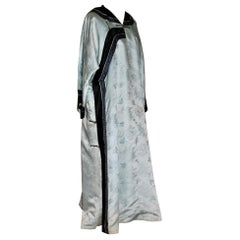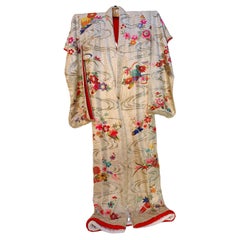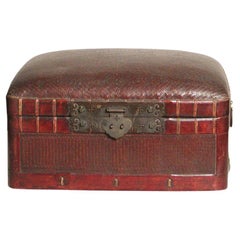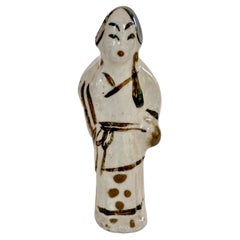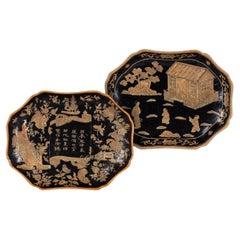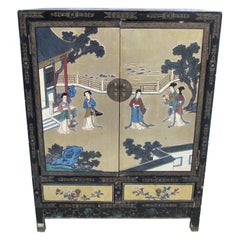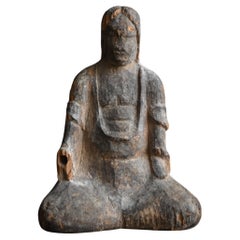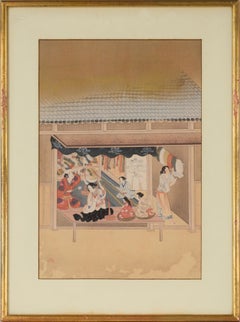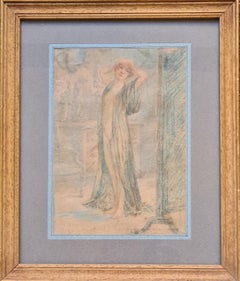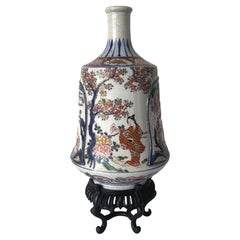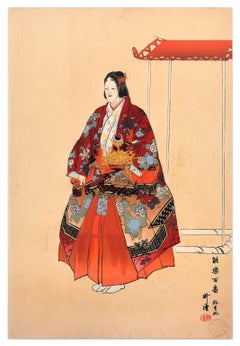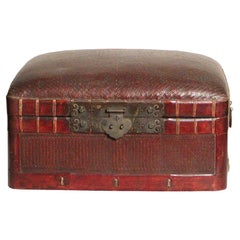Antique Chinese Kimono
1920s Chinese Antique Chinese Kimono
Early 20th Century Chinese Chinese Export Antique Chinese Kimono
Silk
Early 1900s Japanese Meiji Antique Chinese Kimono
Bamboo
16th Century Chinese Antique Chinese Kimono
Ceramic
19th Century Chinese Antique Chinese Kimono
Porcelain
19th Century French Chinoiserie Antique Chinese Kimono
Clay
Early 20th Century Chinese Chinese Export Antique Chinese Kimono
Lacquer
15th Century and Earlier Japanese Other Antique Chinese Kimono
Cypress
1920s Edo Antique Chinese Kimono
Paper, Ink, Woodcut
Late 19th Century Symbolist Antique Chinese Kimono
Pencil, Crayon, Color Pencil
19th Century Japanese Meiji Antique Chinese Kimono
Ceramic
1920s Modern Antique Chinese Kimono
Woodcut
Early 1900s Japanese Meiji Antique Chinese Kimono
Coral, Bronze
1790s Baroque Antique Chinese Kimono
Brass
1870s French Japonisme Antique Chinese Kimono
Bronze
Early 20th Century Japanese Showa Antique Chinese Kimono
Cotton
People Also Browsed
Mid-20th Century Chinese Antique Chinese Kimono
Porcelain
20th Century Japanese Japonisme Antique Chinese Kimono
Silk
20th Century Japanese Japonisme Antique Chinese Kimono
Brocade, Silk
Early 1900s Chinese Antique Chinese Kimono
Mid-19th Century Chinese Qing Antique Chinese Kimono
Silk
20th Century Japanese Japonisme Antique Chinese Kimono
Cotton, Silk
Mid-20th Century Japanese Japonisme Antique Chinese Kimono
Silk
1850s French Antique Chinese Kimono
Walnut
Late 19th Century Italian Belle Époque Antique Chinese Kimono
Bronze
20th Century Japanese Japonisme Antique Chinese Kimono
Silk
Early 20th Century Japanese Japonisme Antique Chinese Kimono
Textile, Acrylic
Late 19th Century Japanese Japonisme Antique Chinese Kimono
Silk, Giltwood
Mid-20th Century Chinese Chinoiserie Antique Chinese Kimono
Jade, Agate
20th Century East Asian Japonisme Antique Chinese Kimono
Brocade, Silk
Late 20th Century Japanese Showa Antique Chinese Kimono
Silk
Early 1800s Antique Chinese Kimono
Recent Sales
19th Century Chinese Antique Chinese Kimono
Bronze, Iron
Late 19th Century Japanese Meiji Antique Chinese Kimono
Bronze
19th Century Chinese Chinese Export Antique Chinese Kimono
Ink, Paper
Early 20th Century French Art Deco Antique Chinese Kimono
Late 19th Century Other Art Style Antique Chinese Kimono
Handmade Paper, Washi Paper, Pigment, Woodcut
17th Century Japanese Antique Chinese Kimono
Gold
19th Century Other Art Style Antique Chinese Kimono
Wood
19th Century Other Art Style Antique Chinese Kimono
Wood
19th Century Other Art Style Antique Chinese Kimono
Wood
Early 1900s Chinese Antique Chinese Kimono
19th Century Chinese Late Victorian Antique Chinese Kimono
Hardwood
Late 19th Century Chinese Antique Chinese Kimono
1920s Chinese Antique Chinese Kimono
1920s Chinese Antique Chinese Kimono
Early 20th Century Chinese Antique Chinese Kimono
1920s Chinese Antique Chinese Kimono
Early 20th Century French Antique Chinese Kimono
Early 20th Century Chinese Antique Chinese Kimono
1920s Japanese Antique Chinese Kimono
Early 20th Century Antique Chinese Kimono
Mid-19th Century Chinese Antique Chinese Kimono
Silk
Early 20th Century Japanese Edo Antique Chinese Kimono
Cotton
Early 20th Century Chinese Qing Antique Chinese Kimono
Wood
Early 20th Century Chinese Antique Chinese Kimono
Fabric, Wood
Early 20th Century Chinese Antique Chinese Kimono
Fabric, Wood
Early 20th Century Chinese Antique Chinese Kimono
Fabric, Wood
1910s French Antique Chinese Kimono
16th Century Chinese Antique Chinese Kimono
Ceramic
Early 20th Century Asian Qing Antique Chinese Kimono
Metal
19th Century Chinese Antique Chinese Kimono
Silk, Down
Late 19th Century Chinese Qing Antique Chinese Kimono
Leather
Early 20th Century Japanese Chinese Export Antique Chinese Kimono
Brass, Bronze
1910s French Antique Chinese Kimono
1810s English George III Antique Chinese Kimono
Porcelain
Early 20th Century Japanese Antique Chinese Kimono
19th Century Antique Chinese Kimono
Bronze
1920s French Antique Chinese Kimono
1750s French Antique Chinese Kimono
Early 1800s English George III Antique Chinese Kimono
Porcelain
Early 1800s English Regency Antique Chinese Kimono
Porcelain
1790s Baroque Antique Chinese Kimono
Brass
1920s Belgian Antique Chinese Kimono
1850s Chinese Chinese Export Antique Chinese Kimono
Metallic Thread
Late 19th Century Chinese Antique Chinese Kimono
Early 20th Century Chinese Antique Chinese Kimono
1920s Chinese Antique Chinese Kimono
1920s Chinese Antique Chinese Kimono
Early 20th Century Chinese Chinoiserie Antique Chinese Kimono
Gold
Early 20th Century Chinese Antique Chinese Kimono
Early 20th Century Chinese Antique Chinese Kimono
1920s Chinese Antique Chinese Kimono
Early 20th Century Japanese Showa Antique Chinese Kimono
Ceramic
19th Century Japanese Meiji Antique Chinese Kimono
Cotton
Early 20th Century Japanese Antique Chinese Kimono
Early 20th Century Japanese Antique Chinese Kimono
1920s Antique Chinese Kimono
Early 20th Century Chinese Antique Chinese Kimono
Porcelain
Early 20th Century French Antique Chinese Kimono
1920s Spanish Antique Chinese Kimono
Paper
Early 20th Century Chinese Antique Chinese Kimono
Antique Chinese Kimono For Sale on 1stDibs
How Much is a Antique Chinese Kimono?
 PAGODA REDOctober 7, 2020
PAGODA REDOctober 7, 2020To determine the age of a Chinese furniture piece, look carefully at the joinery and finish. Natural expansion and contraction of the wood over time will cause a joint to protrude or retract, distorting a once-seamless fit. Antique lacquer finishes become crackled and worn over time. Areas of exposed wood, such as the underside of a table, the footrest of a chair, or the back of a cabinet should appear raw and dry compared to the finished surface. With use, the legs of tables and chairs become weathered near the bottom from precipitation and use.
 Lotus GallerySeptember 23, 2020
Lotus GallerySeptember 23, 2020The best way to know is to take it to an expert, such as an appraiser, reputable dealer or auction house, or museum
